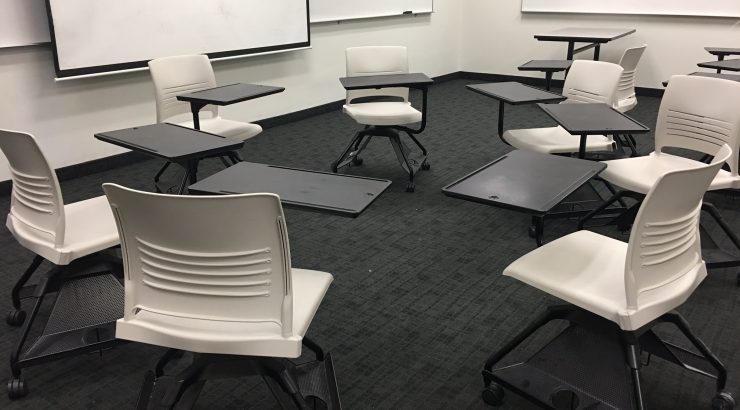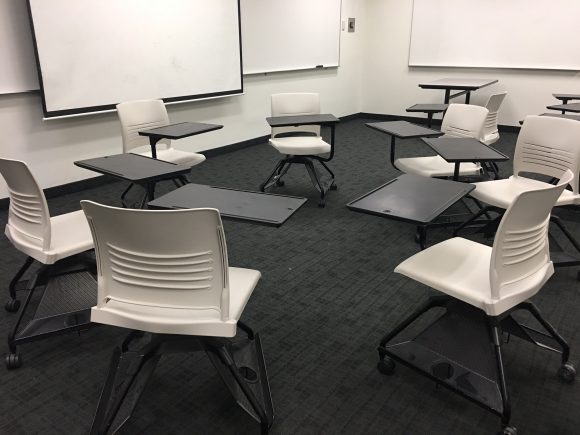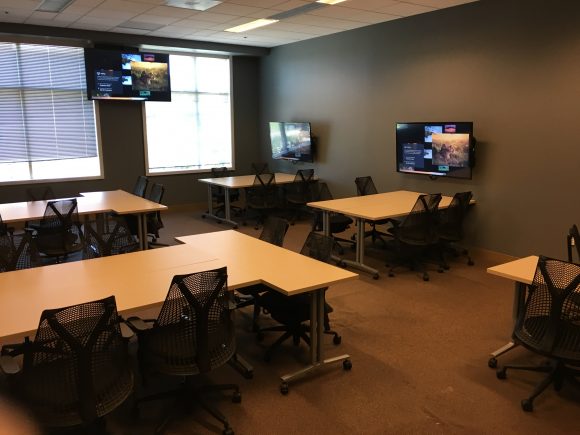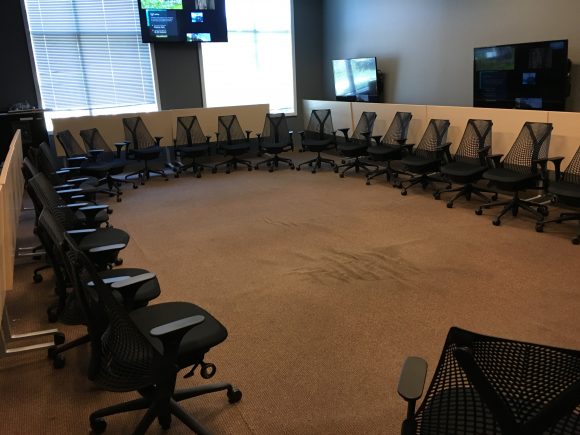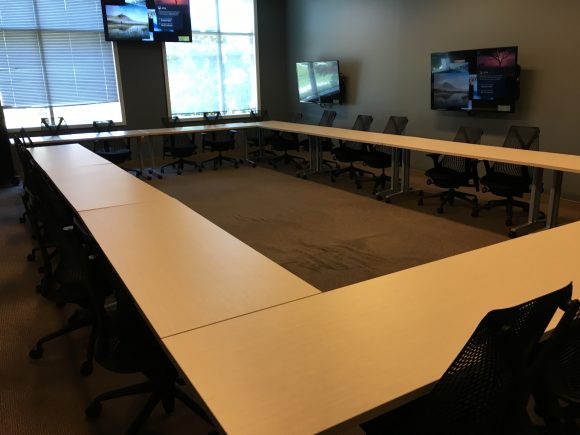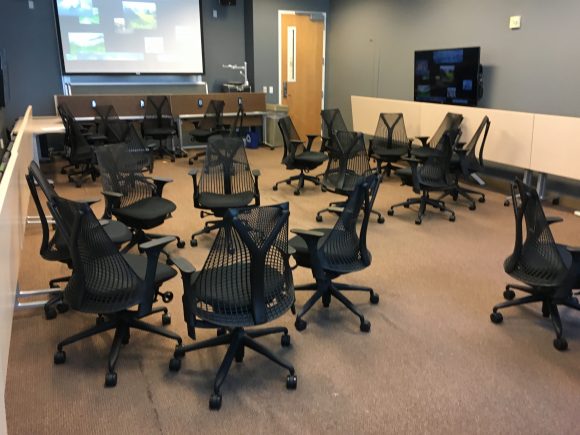Using Flexible Classrooms, part 1 Getting the most out of the space
September 11, 2017
Have you ever tried to talk to someone who is facing away from you?  From a body language standpoint, it certainly doesn’t facilitate much discussion. Unfortunately, in traditional classrooms with heavy/bolted desks and chairs, this is the typical view of anyone sitting behind the first row. Luckily, at Chapman University, we’re adding improved flexibility into several of our classrooms in order to inspire communication and collaboration between students.
From a body language standpoint, it certainly doesn’t facilitate much discussion. Unfortunately, in traditional classrooms with heavy/bolted desks and chairs, this is the typical view of anyone sitting behind the first row. Luckily, at Chapman University, we’re adding improved flexibility into several of our classrooms in order to inspire communication and collaboration between students.
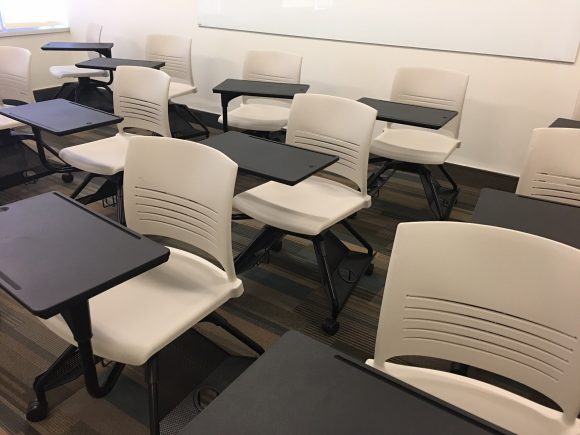
No need to contain these flexible desks in rows. We’d love to see you mix them up in all sorts of styles that fit your pedagogical needs.
If you find yourself teaching in a classroom that has desks and chairs with wheels, or in a classroom where desks can be configured into several shapes, you’re in the fortunate position of unleashing your students from a teacher-to-student learning environment and into a more collaborative learning experience. Congratulations!
By reconfiguring the classroom, you can reconfigure your teaching. Flexible classroom design can increase the interactions from large group to small groups to dyads and beyond with seamless ease. Scroll down to view some of the flexible furniture and possible configurations from two rooms on our campus:
See part 2 of this series regarding the use of flexible furniture in large group activities.
